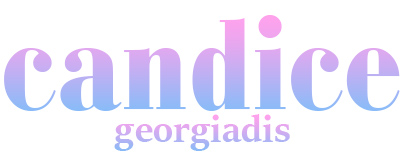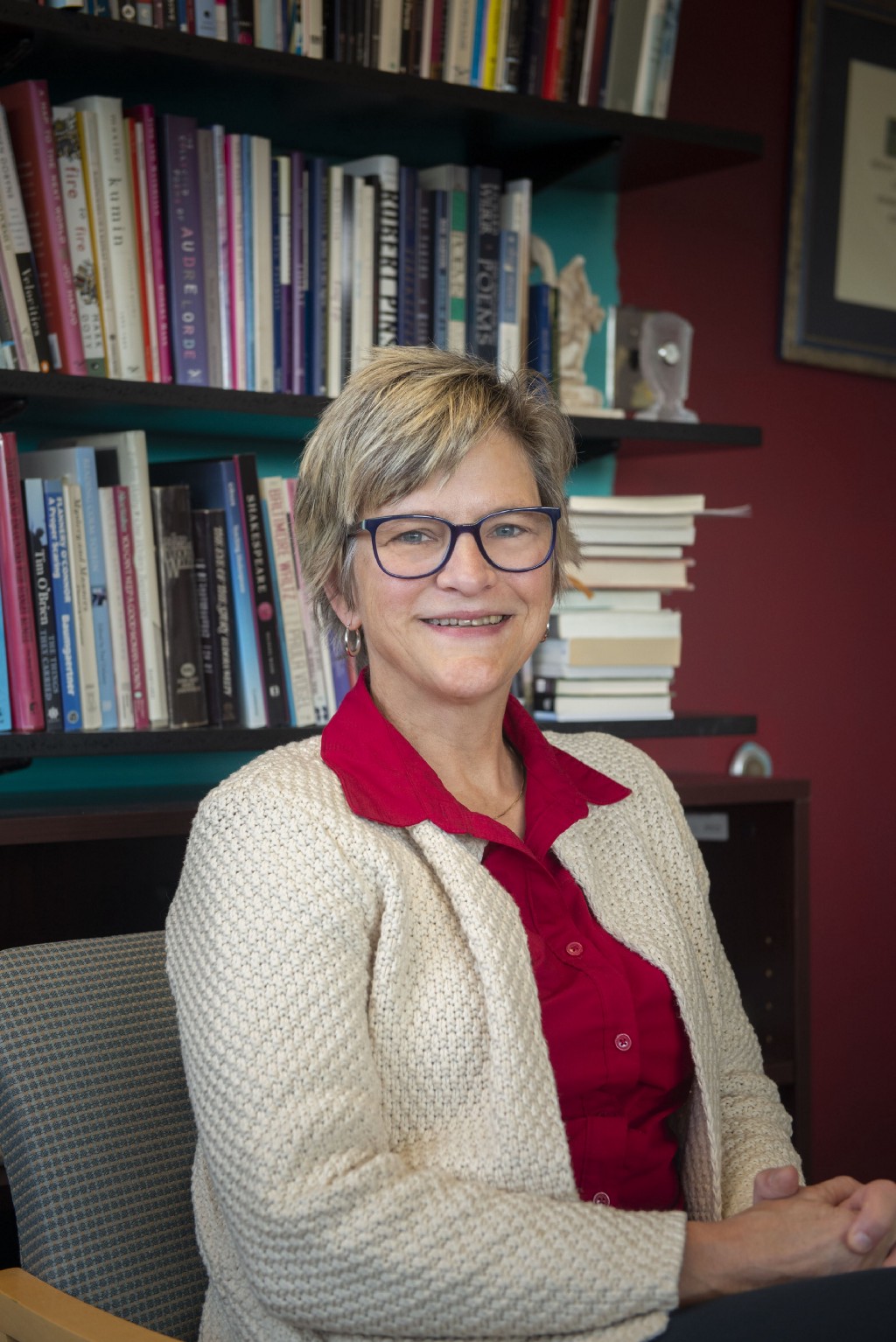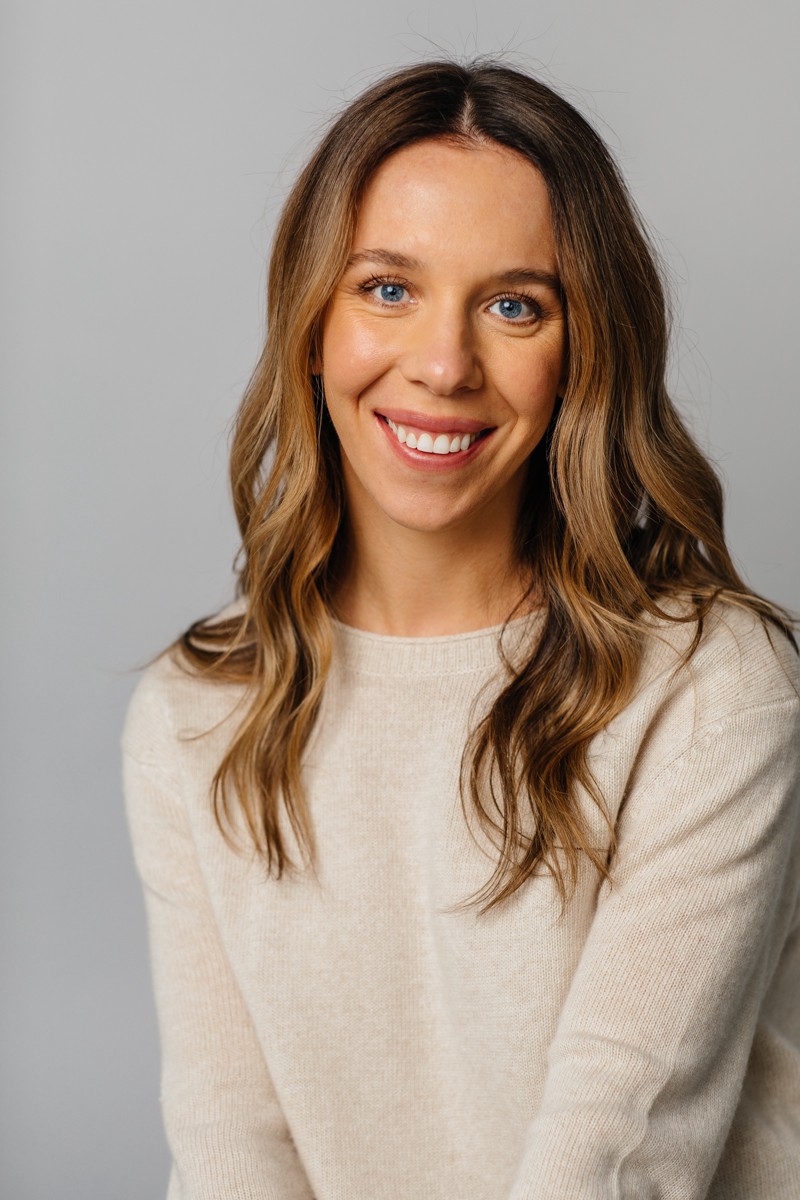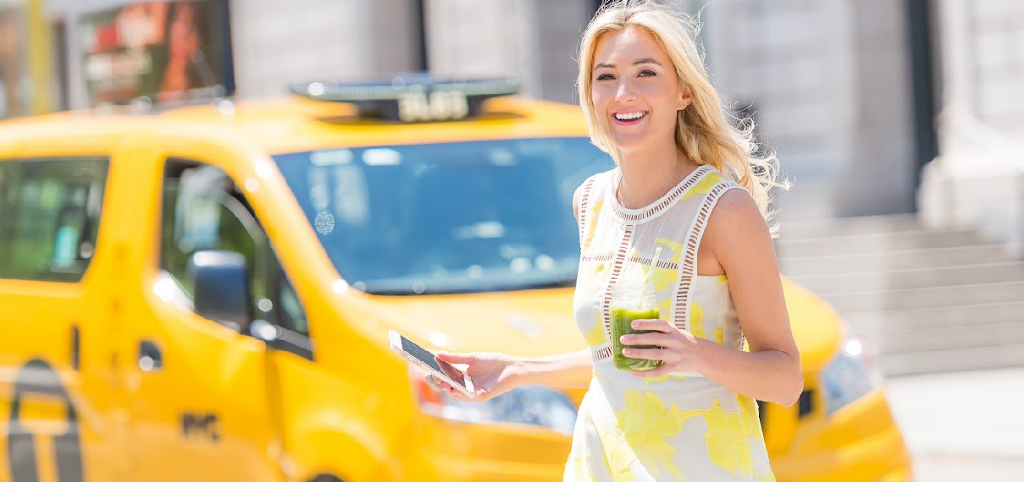Women In Wellness: Katie Jackson of FUEL for Impact On The Five Lifestyle Tweaks That Will Help Support People’s Journey Towards Better Wellbeing
An Interview With Candice Georgiadis

Get ready for highs and lows — There are times where I feel amazing. I’m pursuing a dream of mine. But, in the pursuit, there are learning experiences. I have had days where I question how I’m going to manage operations, finances, and marketing all myself while being the wife and mother I want to be. I wish someone would have told me that this is normal because I have found that all business owners experience those same feelings.
As a part of my series about the women in wellness, I had the pleasure of interviewing Katie Jackson.
Life-long athlete, full-time working mom of two, Katie is on a mission to make a statement that health and wellness not only matter for the individual, but society as well. She has had the privilege to work for companies like Verizon Wireless, Anytime Fitness, Wellbridge Athletics, EXOS, and Ameren UE. Driven to do more for others, she founded her business, F.U.E.L. for Impact, LLC January 31, 2022.
Thank you so much for joining us in this interview series! Our readers would love to “get to know you” better. Can you share your “backstory” with us?
Even though my job description would be ideal for someone who is extroverted, I am a bit of an introvert…and NERD. I grew up playing video games with my brother and sister on the Nintendo 64 and PlayStation 2. My favorite games were Zelda, Ocarina of Time, Mario Kart, and The Lord of the Rings games.
I also LOVE movies, mostly because I love the stories. Some of my favorite movies include the Lonesome Dove series, The Lord of the Rings trilogy (including the two Hobbit movies), and the two latest Wonder Woman movies.
When I wasn’t nerding out, I was playing volleyball, and was able to earn a full-ride scholarship to MSSU. After graduating with a degree in Health Promotion and Wellness and a minor in business management, I married my high school sweetheart and had two girls.
When I’m not taking care of my girls, I mostly work on my business and find time to go horseback riding at Longmeadow Rescue Ranch once a week. I love being around horses. It relieves stress and keeps me centered.
Can you share the most interesting story that happened to you since you started your career? What were the main lessons or takeaways from that story?
There is one major theme that continues to pop up as a coach and trainer: You can be the most knowledgeable trainer in the world, have the best intentions, and be extraordinary in the customer service realm. But if you cannot facilitate behavior change or help the client dedicate more energy towards their well-being, it is difficult to succeed.
It is our jobs as professionals to help the client see the reward in self-care, not in a selfish way, but in the way we are all meant to live and how that not only impacts themselves, but their loved ones, and the community.
It’s difficult to pick a particular story because this has applied to almost all my clients.
Can you share a story about the biggest mistake you made when you were first starting? Can you tell us what lesson you learned from that?
The biggest mistake I made was that I assumed the human body was this perfectly calculated robot. Let’s me explain: Biomechanics will tell you that a push up utilizes the pectoral muscles, deltoids, and triceps. This is correct. However, I find that a lot of clients cannot perform certain movements correctly because of mobility issues.
Incorrect movement doesn’t always have to do with the client’s athleticism, but the neuro-connections formed by our habits each day. If you don’t use them, you lose them! Think of it this way: Hold your hand up and make a fist as tightly as you can like you’re trying to pop a water balloon. Relax and perform the same exercise, only this time, flex your wrist at a 90-degree angle. It is difficult to squeeze at the same strength, right?
We are not robots. Our bodies are continuously adapting to our environments and the habits we form each day. So it is my job to help you feel better physically and mentally while achieving your goals.
Let’s jump to our main focus. When it comes to health and wellness, how is the work you are doing helping to make a bigger impact in the world?
When I think about impacting the world, three things come to mind: Funding, energized people, and community. Think about it: When we hear good news, it’s usually a random act of kindness by someone who is energized by the cause itself or involves someone who was inspired by others to make the kind gesture.
Being a healthy individual mentally and physically assists these acts and characteristics because ‘Energized’ people (as I like to call them) are more positive people willing to do good for others. So, I team up with my clients. Rather than telling them what they should be doing, together, we form a plan that is reasonable for their lifestyle while adding reliable expertise along the way.
Another huge part of our business is that we select registered non-profits to donate to each month. At the end of the month, we calculate twenty percent of each client’s total expenses, adding together the subscription and coaching session costs. Every client is emailed a chart to see how much our company donated according to their expenses.
We select non-profits carefully, including local as well as nationally recognized organizations. So far, we have donated to Grace’s Place Crisis Nursery and The Covering House — STL.
So here we are, working hard to develop healthy, energized human beings while setting the example ourselves by providing funding to those who need it most.
Can you share your top five “lifestyle tweaks” that you believe will help support people’s journey towards better wellbeing? Please give an example or story for each.
To become an energized individual that I described above, consider the following:
1 . DEFINE YOUR WELL-BEING — When you think, ‘healthy’ or ‘weight loss’ do you feel energized? Or do you cringe? Our past experiences, social situations, successes, and failures form our relationship towards health. Let me give you an example:
I worked with a client once who came to me looking to lose weight in a hurry. Let’s call her, Jill. Jill was headed to a beach vacation with her husband.
Part of our game plan was for Jill to snack less and cook more satisfying, nutritionally dense meals. She was to increase her exercise from 10 minutes of walking a day to 20 minutes of brisk walking with hand weights. It not only seemed attainable for her full-time job and lifestyle but was an activity she was comfortable with.
The first week, Jill stuck to our plan diligently, but the second week was a struggle for her, and her attitude seem to shift entirely. I began to wonder what other obstacles Jill was facing. During our next session, I had mentioned that our plan didn’t seem to be working and asked her what she was struggling with. Jill shared she had stepped on the scale at the end of the first week and didn’t see her number budge.
Jill had lost faith in herself at that point. She was clearly frustrated. She also mentioned that she had struggled with weight loss, her body image, and when under high amounts of stress, she grabbed a sugary granola bar as quick snack. Since Jill was so stressed about her goal, she was snacking more, which wasn’t helping the number go down.
Before we made any new plans, we re-defined what well-being meant to her. It was more than just a number. To her it meant having more energy to do the things she wanted, and it also meant being independent and getting involved in community events. We also made a deal that she could not step on the scale for 4 weeks 😊.
Well-being is about ALL things you, not just numbers. Jill not only lost the 15 pounds in time for her beach vacation but was able to achieve her desired lifestyle. Like everyone, she had setbacks, but was able to quickly adapt because of her new view of health.
Establishing a healthy view of well-being provides you with ammunition to be versatile.
2. FAITH that you can achieve it — Here at FUEL for Impact, we say that to begin any journey, you need to have a solid foundation of FAITH that you can achieve something. Faith in your ability to accomplish goals will flourish if you recognize the all-encompassing impact well-being truly has. Whether you have proof that you can achieve something because you’ve accomplished similar goals before, or you have never attempted it, a new goal requires faith to grit through the difficult times.
Working to improve a client’s mobility, I prescribed him a yoga/stretching routine in addition to his strength routine. He wanted to be less susceptible to injury and feel more comfortable while lifting weights. This guy had never attempted yoga before, but through his hard work and perseverance, he was able to master the movements.
He was very muscular, and some wouldn’t suspect him to be good at an activity such as yoga, but he proved many wrong because he had faith that he could accomplish the movements perfectly!
Faith will get you far!
3. UNITE with an expert and your community — When you undertake a new challenge, it can be difficult on your own. I highly recommend contacting a mentor or expert. Someone you feel you can trust and who is just as invested in your goal. This is where FUEL for impact is unique. As a health coach and trainer, I explain to my clients that I do what I love and work hard to help them succeed. Since I’m a bit competitive, I never give up on anyone. It’s my favorite part of what I do.
Since you are dedicating 20% of your monthly expenses to a non-profit, you are uniting with fellow individuals to assist those in need. We give to non-profits centered around veterans, families facing crisis’s, children’s physical and mental health, and more!
Achieving a healthy lifestyle is not a simple task but when you have knowledge and accountability with a cause, you will be unstoppable!
Two clients’ testimonies:
I have worked with Katie for a number of years regarding my mental and physical health. She is an excellent listener, extremely well-educated, and inspiring. One of my favorite things about working with Kate is that she really listens. You can count on Kate to give you one-on-one attention as well as personalized service. She encourages the importance of mental health as well as physical health.
I am a mother of three, wife, teacher, and author. Katie has helped me understand that self-care is vital to my success and happiness in each of the roles in my life. She is also understanding as she is a working mother herself, who is dedicated to her own life’s goals and dreams. Katie not only provides phenomenal service but expects of her clients only that which she expects of herself. Katie lives what she preaches and that is one of the best health — heck, life — coaches, a person could have! She’s an inspiration, and I hope to work with her for a very long time.
-Rachel B.
What stands out about Katie is her insightful, honest and holistic approach to training. Now 65 years old, I have been training with Katie for over 6 years and her program design incorporates everything from high intensity muscle/endurance growth programs to low impact rehabilitation programs, both programs focusing on safe and measured exercises. Katie is responsible for guiding and inspiring me thru recovery from severe spinal stenosis resulting in cervical and lower back surgery. Katie knew when to push always monitoring form and progress. Her approach inspires confidence, and she does it all with a sincere interest in her client’s wellbeing.
Katie has help me achieve a better quality of life thru physical fitness training and nutritional coaching. Part of what motivated me while training with Katie was my fear of disappointing her because she was so invested in helping me. I know Katie worked just as hard planning my training sessions as I did going thru them. We set goals together and at every milestone we achieved those goals.
-Tim R.
4. ENERGIZE from the success you gain — Accomplishing goals gives you energy. You present yourself to the world more positively. Whether it’s your attitude in the grocery store, or you’re giving a presentation to a group of executives at work, it keeps you going! Always be working towards something.
A client of mine wanted to be able to genuflect in church by his daughter’s wedding. When he accomplished that goal, he used that experience to fuel his wellness journey, not to mention his confidence improved!
5. LIVE creating your unique impact — Here’s the final tweak: ALL FIVE OF THESE TOPICS ARE MEANT TO BE USED TOGETHER! To become an energized individual, you must carefully go through all five of these tweaks. Humans are passionate individuals who are meant to be working towards something. When you follow a healthy lifestyle, things begin to fall into place, and that’s not by accident. I have seen confidence increase, courage skyrocket to pursue dreams, and relationships soar. Individuals who take time for their physical and mental health are more likely to succeed or be seen as successful. So, it’s your turn!
If you could start a movement that would bring the most amount of wellness to the most amount of people, what would that be?
I would first look at people’s basic needs. There are many who don’t have food, water, shelter, adequate clothing, etc.
A frustration of mine is that we have all the science and technology to preserve food, and create an abundance, yet we have multiple areas of the world full of starving people. I don’t think there is any excuse for letting people go hungry, poor or not. We have plenty of wealth and resources around the world to pull together and create basic nutritional needs for the poor.
I would love to create a system that feeds those people. There are many wonderful non-profits fighting for this already, but to have a better permanent system, that would really be something!
What are your “5 Things I Wish Someone Told Me Before I Started” and why?
- Get ready for highs and lows — There are times where I feel amazing. I’m pursuing a dream of mine. But, in the pursuit, there are learning experiences. I have had days where I question how I’m going to manage operations, finances, and marketing all myself while being the wife and mother I want to be. I wish someone would have told me that this is normal because I have found that all business owners experience those same feelings.
- Don’t obsess over your weaknesses. Yes — you should take time to learn how to improve your organization, marketing, etc. but don’t let that consume your time or thoughts. It’s not good for your confidence. Focusing on your weaknesses or challenges squashes your momentum and the passion you have for your business. Certainly, make time to further your business, but don’t stretch yourself thin.
- Stay YOU — From an operational standpoint, the ‘see what others are doing’ phrase is good advice, but it’s easy to lose what makes you stand out because of it. When I promote my business to potential clients, I am much more successful about saying what I feel and have experienced rather than saying what I think I should say. Don’t clone another business owner. Stay YOU.
- Enjoy the process! — I love what I do, but sometimes I get so focused on what I need to get done, that I forget that this is supposed to be enjoyable! Depending on the week, it can be easy to become overwhelmed and cranky. So always take a step back and put into perspective what you’ve accomplished so far. It not only makes you more productive but improves your attitude 100%.
- Set boundaries — Ah yes — this is a challenging one. Sometimes we business owners cannot help it when we receive that email from a concerned customer at 7:00pm. There are times where we need to address it. But I always ask myself, “Will this hurt if I wait until tomorrow to respond? Why do I need to do it now?” If I feel it needs my attention right away, I will respond. If not, I set a reminder in my phone for the morning, so it doesn’t linger in my brain.
Sustainability, veganism, mental health and environmental changes are big topics at the moment. Which one of these causes is dearest to you, and why?
Mental Health is what I hold dearest. One of my blog posts discusses a mental health challenge I was facing during the pandemic and you can read about it here.
Part of it discusses the danger of isolation. The lie that we believe we are alone, and no one has had similar thoughts or experiences. It very dangerous because we go down this rabbit hole of depression and anxiety, which can lead to damaging or even life-threatening behavior if left un-resolved.
If you don’t have your mental health, it’s hard to participate in life. Life is meaningful and filled with purpose. Without mental health, you live in this different perspective, and sometimes, you don’t even realize you’re doing it.
What is the best way our readers can follow you online?
You can read about me and keep up with my blog at www.fuelforimpact.company. I’m also on Facebook, Instagram, LinkedIn.
Thank you for these fantastic insights!
Women In Wellness: Katie Jackson of FUEL for Impact On The Five Lifestyle Tweaks That Will Help… was originally published in Authority Magazine on Medium, where people are continuing the conversation by highlighting and responding to this story.
















